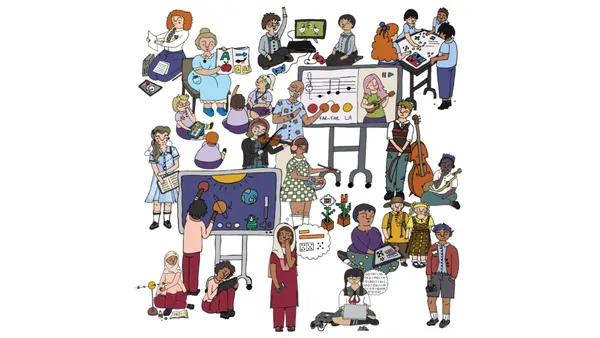Dive Brief:
- New Hampshire's Pittsfield Middle High School struggled for years with attendance, discipline and a lack of student engagement, but turned itself around by reaching out to the local community for support, according to Edutopia.
- The middle and high school is the only one located in the rural town of Pittsfield and was once the fifth-lowest-performing in the state, and at one point its reputation became so bad that enrollment dropped 40% due to neighboring Barnstead refusing to send students to the school, resulting in a state funding cut.
- To improve the school, Superintendent John Freeman sought community input by setting up tables at popular local events, developed a Site Council that gave both students and members of the community a voice on rules and regulations, adopted a competency-based system that moved away from letter grades, and formed a student-centric Justice Committee that forgoes top-down discipline in favor of peer mediation with the support of a teacher.
Dive Insight:
For schools looking for additional support or resources, the local community can offer a variety of options. From higher ed institutions to local businesses, schools and districts often have opportunities for assistance with new programs, supplies, volunteers and more.
Additionally, Pittsfield Middle High School's move to a competency-based model echoes a statewide push in New Hampshire that has been ongoing for 20 years. Those efforts have been credited with contributing to an environment where teachers have more agency and there's less top-down decision-making, opening the door for more innovation.
Its focus on giving students more voice, particularly in the Justice Committee, are in line with engagement and discipline trends. Many districts have abandoned "zero tolerance" disciplinary measures, recognizing that they perpetuate a cycle of misconduct by leaving students further behind academically as a result of suspensions and expulsions. In an environment where raising graduation rates is a core focus, keeping students engaged and in the classroom — while equipping them with the tools to constructively resolve conflicts — is of greater benefit to all parties involved.













